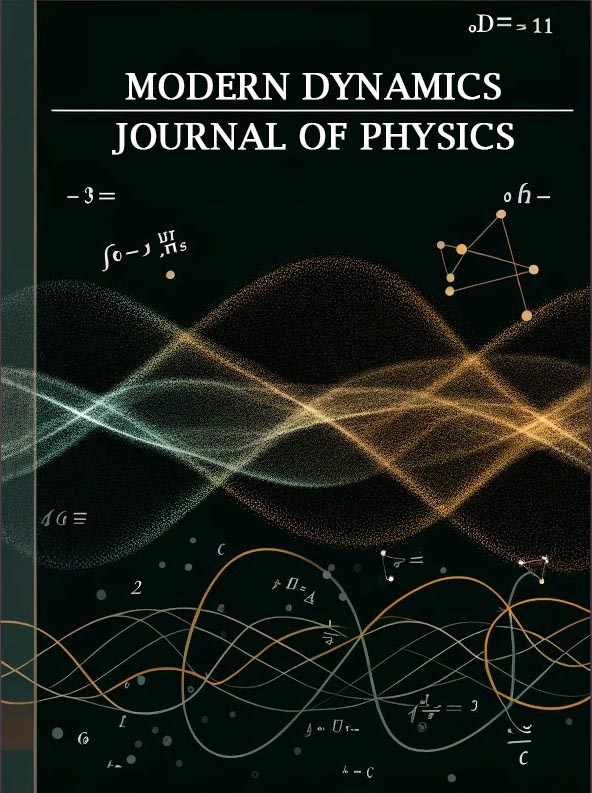Quantum Entanglement and Its Applications in Quantum Information Processing
DOI:
https://doi.org/10.36676/mdjp.v1.i1.1Keywords:
Quantum entanglement, Quantum information processing, Quantum teleportation, Superdense coding, Quantum cryptographyAbstract
Quantum entanglement stands as one of the most intriguing phenomena in quantum mechanics, defying classical intuition and paving the way for revolutionary advancements in information processing. the fundamentals of quantum entanglement and explores its applications in quantum information processing. Beginning with a concise overview of entanglement theory, we delve into various protocols and techniques that leverage entangled states to perform tasks such as quantum teleportation, superdense coding, and quantum cryptography. Furthermore, we discuss recent developments in the field, including entanglement-based quantum key distribution schemes and entanglement swapping protocols. Through a comprehensive examination of both theoretical principles and experimental implementations, this paper elucidates the pivotal role of quantum entanglement in shaping the landscape of quantum information processing, with implications for secure communication, computational speedup, and future quantum technologies.
References
A. Dave, N. Banerjee and C. Patel, "CARE: Lightweight Attack Resilient Secure Boot Architecture with Onboard Recovery for RISC-V based SOC," 2021 22nd International Symposium on Quality Electronic Design (ISQED), Santa Clara, CA, USA, 2021, pp. 516-521, doi: 10.1109/ISQED51717.2021.9424322.
Anil Kumar. (2017). Quantum Entanglement and Non-Locality: Experimental Advances and Theoretical Implications. Innovative Research Thoughts, 3(10), 315–319. Retrieved from https://irt.shodhsagar.com/index.php/j/article/view/1401
Atomode, D (2024). OPTIMIZING ENERGY EFFICIENCY IN MECHANICAL SYSTEMS: INNOVATIONS AND APPLICATIONS, Journal of Emerging Technologies and Innovative Research (JETIR), 11 (5), 458-464.
Bennett, C. H., Brassard, G., Crépeau, C., Jozsa, R., Peres, A., & Wootters, W. K. (1993). Teleporting an unknown quantum state via dual classical and Einstein-Podolsky-Rosen channels. Physical Review Letters, 70(13), 1895-1899.
Bennett, C. H., & DiVincenzo, D. P. (2000). Quantum information and computation. Nature, 404(6775), 247-255.
Bouwmeester, D., Pan, J. W., Mattle, K., Eibl, M., Weinfurter, H., & Zeilinger, A. (1997). Experimental quantum teleportation. Nature, 390(6660), 575-579.
Dr. Nadia Ahmed. (2024). Quantum Computing Algorithms for Integer Factorization: A Comparative Analysis. Modern Dynamics: Mathematical Progressions, 1(1), 6–9. https://doi.org/10.36676/mdmp.v1.i1.02
Dr. Vikram Gupta. (2023). Recent Advancements in Computer Science: A Comprehensive Review of Emerging Technologies and Innovations. International Journal for Research Publication and Seminar, 14(1), 329–334. Retrieved from https://jrps.shodhsagar.com/index.php/j/article/view/377
Ekert, A. K. (1991). Quantum cryptography based on Bell's theorem. Physical Review Letters, 67(6), 661-663.
Gisin, N., & Thew, R. (2007). Quantum communication. Nature Photonics, 1(3), 165-171.
Goyal, R. (2024). Quantum Cryptography: Secure Communication Beyond Classical Limits. Journal of Quantum Science and Technology, 1(1), 1–5. https://doi.org/10.36676/jqst.v1.i1.01
Gurraj Singh. (2022). Quantum Computers: A review of Powers and Applications. International Journal for Research Publication and Seminar, 13(2), 179–184. Retrieved from https://jrps.shodhsagar.com/index.php/j/article/view/588
Horodecki, M., Horodecki, P., & Horodecki, R. (2009). Quantum entanglement. Reviews of Modern Physics, 81(2), 865-942.
Horodecki, R., Horodecki, P., Horodecki, M., & Horodecki, K. (2009). Quantum entanglement. Reviews of Modern Physics, 81(2), 865-942.
Kavita. (2017). Group Theory of Mathematics. Universal Research Reports, 4(12), 79–81. Retrieved from https://urr.shodhsagar.com/index.php/j/article/view/370
Katragadda, V. . (2024). Leveraging Intent Detection and Generative AI for Enhanced Customer Support. Journal of Artificial Intelligence General Science (JAIGS) ISSN:3006-4023, 5(1), 109–114. https://doi.org/10.60087/jaigs.v5i1.178
Kumar, S. (2024). Advances in Quantum Engineering: Harnessing Quantum Phenomena for Practical Applications. Journal of Quantum Science and Technology, 1(1), 6–9. https://doi.org/10.36676/jqst.v1.i1.02
Ladd, T. D., Jelezko, F., Laflamme, R., Nakamura, Y., Monroe, C., & O'Brien, J. L. (2010). Quantum computers. Nature, 464(7285), 45-53.
Mrs. Monika. (2024). Black Holes and Information Paradox: Resolving the Hawking Paradox. Innovative Research Thoughts, 9(1), 336–342. Retrieved from https://irt.shodhsagar.com/index.php/j/article/view/617
Nielsen, M. A., & Chuang, I. L. (2000). Quantum computation and quantum information. Cambridge University Press.
O'Brien, J. L., Furusawa, A., & Vučković, J. (2009). Photonic quantum technologies. Nature Photonics, 3(12), 687-695.
PRINCY THAREJA, & SUNITA. (2016). An Advanced Mean Round Robin (AMRR), CPU Scheduling Algorithm. International Journal for Research Publication and Seminar, 7(3). Retrieved from https://jrps.shodhsagar.com/index.php/j/article/view/818
Satyanarayan Kunungo , Sarath Ramabhotla , Manoj Bhoyar "The Integration of Data Engineering and Cloud Computing in the Age of Machine Learning and Artificial Intelligence" Iconic Research And Engineering Journals Volume 1 Issue 12 2018 Page 79-84
Seema. (2018). Phenomena of interference and Young’s double slit experiment : A Review. Innovative Research Thoughts, 4(2), 140–143. Retrieved from https://irt.shodhsagar.com/index.php/j/article/view/490
Yadav, S. (2023). An Extensive Study on Lattice-Based Cryptography and its Applications for RLWE-Based Problems. Universal Research Reports, 10(3), 104–110. Retrieved from https://urr.shodhsagar.com/index.php/j/article/view/1128
Downloads
Published
How to Cite
Issue
Section
License
Copyright (c) 2024 Modern Dynamics: Journal of Physics

This work is licensed under a Creative Commons Attribution-NonCommercial 4.0 International License.
This license requires that re-users give credit to the creator. It allows re-users to distribute, remix, adapt, and build upon the material in any medium or format, for noncommercial purposes only.

